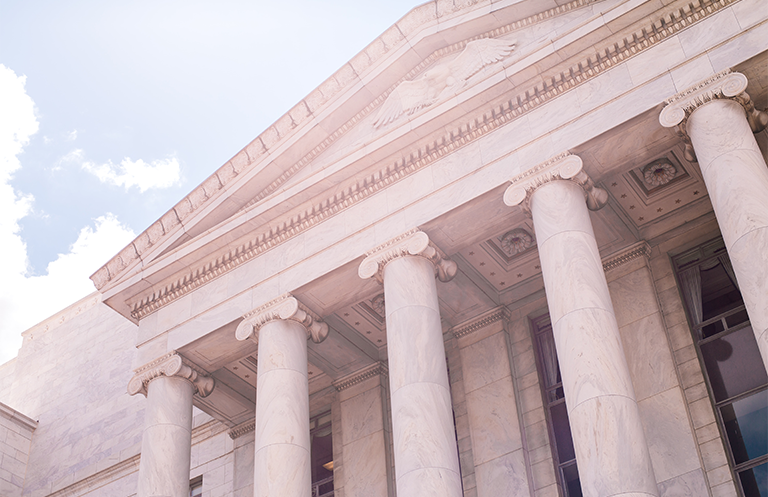The Infrastructure Investment and Jobs Act will transform the Southeast


On Friday, November 5, the U.S. House of Representatives passed the Infrastructure Investment and Jobs Act. The bill passed the Senate in a bipartisan vote in August and President Biden has planned a signing ceremony for the bill on Monday, November 15. The $1.2 trillion package is a historic investment in infrastructure that advances energy efficiency, resiliency, and electric transportation. Combined with the President’s Build Back Framework, it will average 1.5 million additional jobs every year for the next 10 years.
More than $4.5 billion will be appropriated to the U.S. Department of Energy to fund vital energy efficiency programs such as the State Energy Program, Weatherization Assistance Program, and the Energy Efficiency and Conservation Block Grant Program. The act also dedicates more than $30 billion to electrifying transportation from personal vehicles to school buses, ports, and public transit. Supporting energy efficiency and electric transportation is especially important as we continue to recover from the covid-19 pandemic, while also addressing the impacts of climate change like stronger storms, extreme heat, and rising sea levels in the eleven southeastern states SEEA serves.
“These investments are critical as we harness the power of energy efficiency to transform the way we live, work, and thrive in the Southeast and nationally,” says SEEA president, Aimee Skrzekut. “We have an unprecedented opportunity to invest in a more diverse workforce, a more robust economy, and healthier housing to create a prosperous future for all.”
Key provisions in the bill include:
Energy Efficiency
- An online database to track energy demand, generation, storage, and emissions where available, in the contiguous 48 states (Title IV – Enabling Energy Infrastructure Investment and Data Collection, Subtitle B – Energy Information Administration);
- A new grant program to support the adaptation and implementation of updated building energy codes, which is estimated to save over $40 billion and 1,180 MMT of CO2 emissions over the next thirty years. (Title V – Energy Efficiency and Building Infrastructure, Subtitle B – Buildings, Section 40511);
- $10 million to educate and train workers on energy-efficient, modern building technology (Title V – Energy Efficiency and Building Infrastructure, Subtitle B – Buildings, Sections 40512 and 40513);
- A $250 million for a new revolving loan fund, Investing in New Strategies for Upgrading Lower Attaining Efficiency (INSULATE) that supports residential and commercial building energy audits and improvements prioritized in states with the poorest efficiency in buildings (Title V – Energy Efficiency and Building Infrastructure, Subtitle A – Residential and Commercial Energy Efficiency, Section 40502);
- Funding to support energy efficiency improvements and renewable energy improvements at public school facilities and nonprofit buildings (Title V – Energy Efficiency and Building Infrastructure, Subtitle D – Schools and Nonprofits);
- An Energy Jobs Council to oversee the National Energy Employment Report and related activities (Title V – Energy Efficiency and Building Infrastructure, Subtitle E – Miscellaneous); and
- Advancing industrial energy efficiency and smart manufacturing (Title V – Energy Efficiency and Building Infrastructure, Subtitle C – Industrial Energy Efficiency).
Resiliency
- A requirement that state regulators consider establishing rate mechanisms allowing utilities to recover costs associated with programs that promote demand response (Title I – Grid Infrastructure and Resiliency, Subtitle – A Grid Infrastructure and Reliability, Section 40104);
- Federal assistance to establish state energy security plans that protect energy infrastructure against physical and cybersecurity threats and ensure resiliency (Title I – Grid Infrastructure and Resiliency, Subtitle A – Grid Infrastructure and Reliability, Section 40108);
- Funding to research the application of codes and standards for the use of mobile and stationary batteries in flexible applications (Title I – Grid Infrastructure and Resiliency, Subtitle A – Grid Infrastructure and Reliability, Section 40111);
- Funding to research second-life applications for electric vehicle batteries as energy storage solutions (Title I – Grid Infrastructure and Resiliency, Subtitle A – Grid Infrastructure and Reliability, Section 40112); and
- Help for coastal Georgians to prepare for more extreme weather, coastal flooding and other disasters exacerbated by climate change.
Electric Transportation
- $2.5 billion to fund electric vehicle charging infrastructure in rural areas, low-and moderate-income neighborhoods, and communities with less public parking options (Title I – Federal-Aid Highways, Subtitle D – Climate Change, Section 11401);
- An Electric Vehicle Working Group of government, utilities, and manufacturers to report on the barriers to electric vehicle adoption (Title V – Research and Innovation, Section 25006);
- More than $6 billion to support a domestic supply chain for battery production (Title II – Supply Chains for Clean Energy Technologies, Section 40207);
- A requirement that state regulators consider measures to promote electric transportation adoption by improving charging infrastructure (Title IV – Enabling Energy Infrastructure Investment and Data Collection, Subtitle C- Miscellaneous, Section 40431);
- $5 billion to establishes a new grant program to replace existing school buses with zero or lower emission buses (Title XI – Clean School Buses and Ferries, Section 71101);
- Investment to expand electric vehicle charging stations and other zero emission initiatives in North Carolina, South Carolina, and Virginia; and
- Funding to replace the ridesharing transit fleet with zero-emissions vehicles in Gainesville, FL.
Additional Resources
- H.R. 3684 (Infrastructure Investment and Jobs Act), Full Text
- Infrastructure Investment and Jobs Act Fact Sheet, Alliance to Save Energy, August 2021
- Summary of EV-Related Provisions in Senate Version of H.R. 3684 – Atlas Public Policy, October 13, 2021
- Legislative Analysis for Counties, the Infrastructure Investment & Jobs Act, National Association of Counties, November 7, 2021
- Ready-to-Go: State and Local Efforts Advancing Energy Efficiency Toolkit, American Council for an Energy-Efficient Economy, November 9, 2021
We will continue to track resources and opportunities as they are deployed nationally, and at the state or municipal level. If you want to explore the provisions of the bill further or would like to know how your organization can get involved, email or schedule a call with Cyrus Bhedwar, director of energy efficiency policy.

